Review by Pete Vack
All photos from the book
David Beare’s most recent volume of Fiat history, Fiat, Twenty More Years Vol 3, 1980-1999, poignantly reminds those residing in the U.S. of the Italian automotive joys we have been denied. In 1983, Fiat exited the US market. Until the purchase of Chrysler followed by the introduction of the Fiat 500 to the U.S. in 2011, no new Fiats landed on these shores (the last Fiats sold here were the 124 Spiders and the X1/9, both by then imported and badged by others).
Yet in America, two generations had been treated to the delights (and problems) of Fiat’s postwar cars including the 1900, 1100, 1200, 1500, 2300, 600, 500, 850, Dino,124, 131, 128 and ultimately, the fatal Ritmo/Strada. These lucky enthusiasts experienced a truly different, and Italian way of motoring. No other manufacturer offered such a cornucopia of nicely styled, interesting, innovative and economical cars. Many of us came to know these cars well, some inside and out.
While Fiat went on and continued to make great cars in ever increasing quantities, we in the U.S. did not know them, could not drive them, and unless on a visit to Europe, would not even see them. We missed, for better or worse, the Panda, the Punto, the Tempo, the Brava and Bravo and Barchetta, not to mention the Multipla. Since they were not imported here, we did not even get road test results from our normal sources. Fiat, as a make, was as gone as Packard. And we were in the dark.
And so it is with thanks that our favorite Fiat historian has given us his third volume of the history of Fiat, one which covers the period from 1980 to 1999 and gives us a well researched and informative look at all the cars lost to U.S. based Fiat fans. What were those Fiats like? Did they handle well, did they appeal to car enthusiasts, were they reliable, who designed them, and what engines were available? Beare tells us all and more.
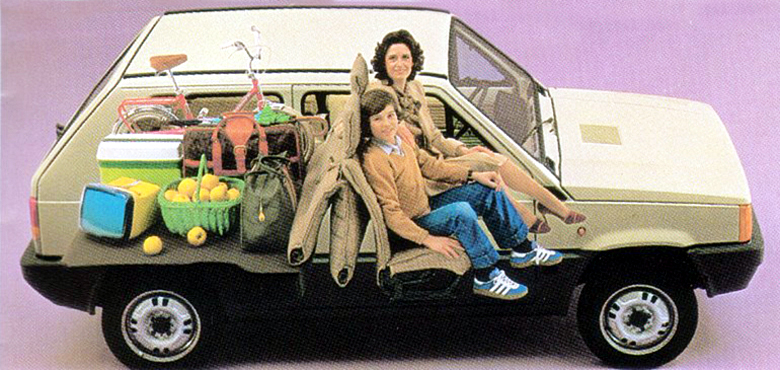
Panda interior was as versatile as one could imagine. The styling by Giugiaro was utilitarian but effective.
As it turns out, many of the Fiats were just as exciting, relevant, fun to drive and innovative as the Fiats we had come to know from a previous age. Fiat hadn’t lost it’s touch, we just lost touch with it. Right off the mark, for 1980, Fiat introduced the Panda, one of its most successful models, planned to fit between the old rear engined 126 and the front drive 127. Designed by Giugiaro and powered by a number of engines, the front wheel drive Panda was as boxy as they come, but like the Mini, had an undeniable charm. Over 4.5 million Pandas were sold from 1980 and 2003. It was innovative, fun to drive, typically Fiat and the first of many Fiats denied to the US market.
Next up was the Uno, a larger front wheel drive car also designed by Giugiaro, and was another outstanding world wide success story. Ads for the Uno boasted that in the two years after its launch, the Uno attained the first million units produced. The Uno Turbo boxed with the Golf GTI, capable of 0-60 in 8.3 seconds and 127 mph top speed; another enthusiast’s machine. In 1993 the Punto replaced the Uno, Giugario again, all four cylinders, front drive and trailing arms and coil springs at the rear. It continues today in its third iteration. Another neat little car, never driven here.
The large car sector was complemented by another Giugiaro masterpiece, the Croma, introduced in 1985, sharing the platform with the Alfa 164 and Saab 9000. The smallest engine was the 1585 cc SOHC and the most powerful was the Turbo with 155 hp. Diesel engines were offered as well. We wonder how the Croma would have compared to the Alfa, still available in the U.S.
1995 saw the 5 door hatch Brava and the 3 door Bravo mid size sedans come onto the market, and at the same time the Barchetta and Fiat Coupe were introduced. Both sports cars surely would have been a great fit for an American enthusiast by now tired of the all too reliable (boring) Japanese products. The problem was that the reliability and quality of the Japanese cars made it difficult for even the most enthusiastic Fiat fan to tolerate the once-amusing faults. Hence the Barchetta was in turn replaced by the Miata based Spider.
The amount of models, options and engines developed by Fiat in that time frame was prodigious, and so must be Beare’s memory. He takes all these in stride, entertaining us with an almost unbroken narrative (great for reading, bad for finding). How he keeps the facts straight is beyond us. But he does and overall, it is a joy to read, combining tech details and road test information and design details all along the way.
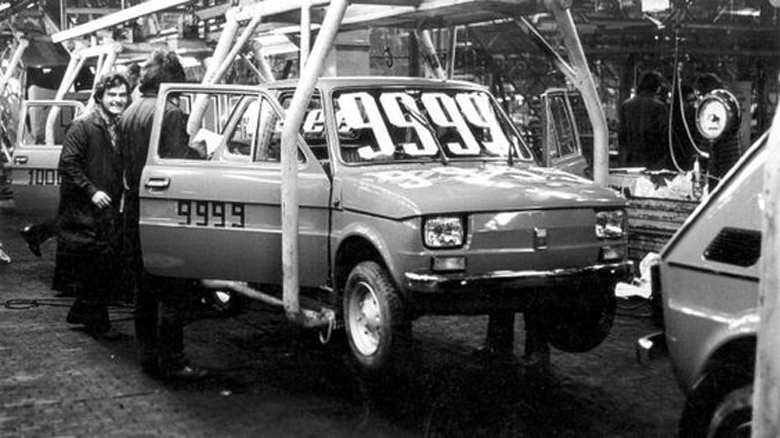
Fiat FSM 126 was produced in Poland, Italy, Austria and Yugoslavia and over 4 million were built, many sold to car starved Eastern Bloc countries.
In addition, Beare relates the story of the Spanish SEAT company, totally Fiat owned after the war but by the 1990s, an arm of Volkswagen. He details the Polish versions of the Fiats that served that country so well. Nor does he forget to relate the continuing saga of the Agnellis, who have most certainly had their ups and downs in the twentieth century; but a family as remarkable and resilient as the company they helped establish in 1899.
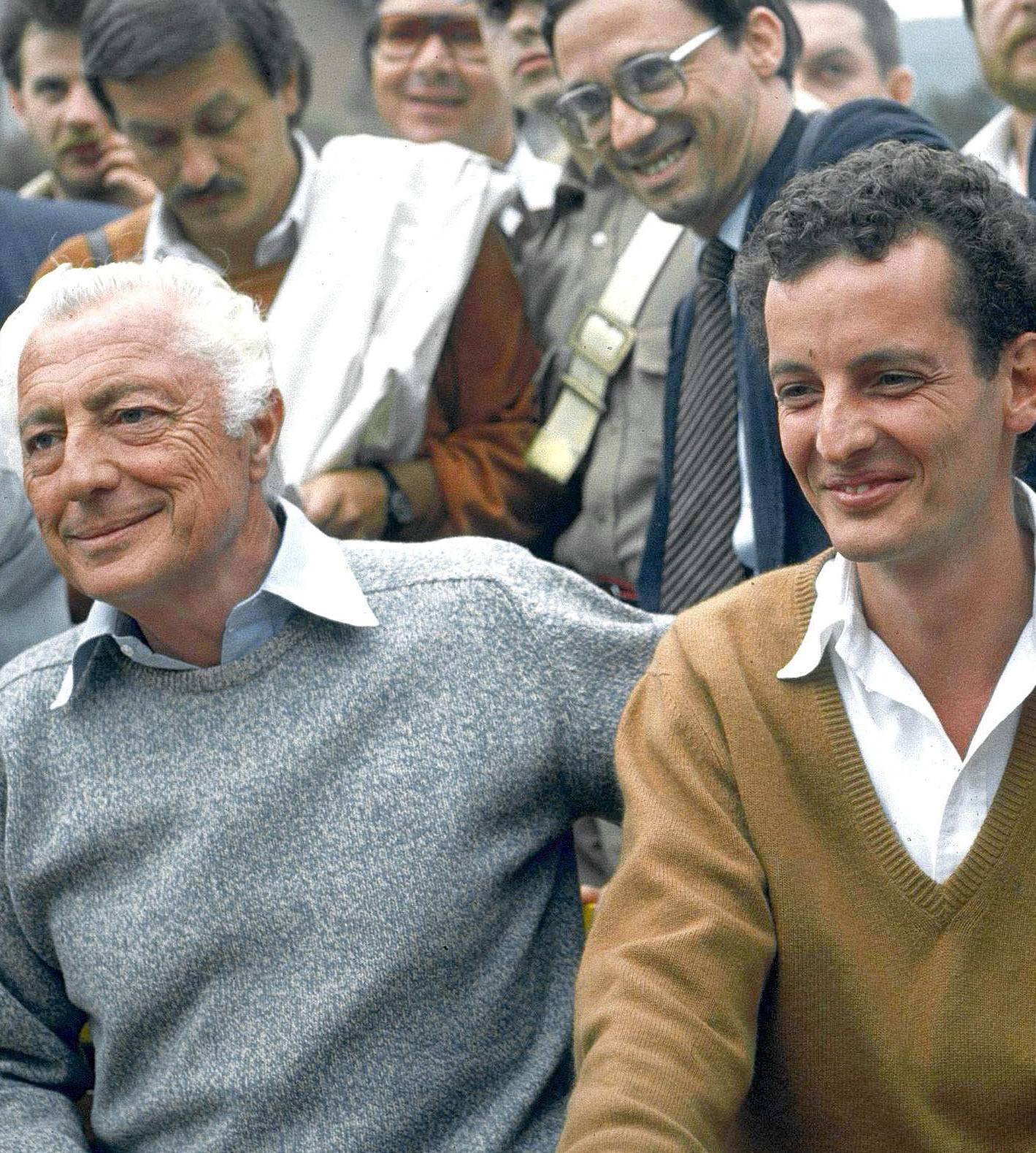
Gianni and son Edoardo Agnelli. Alienated and seen as unfit to take over the company, Edoardo committed suicide on November 15, 2000.
As with his previous volumes, Beare deftly includes the social and political backdrops, the first being the realization that the economic miracle of the 1960s would not last, ushering in an era of tragic strikes and labor unrest throughout the 1980s. In the 1990s Italy was beset with corruption, which also affected the economy. Nevertheless, Fiat continued to grow throughout this turbulent era.
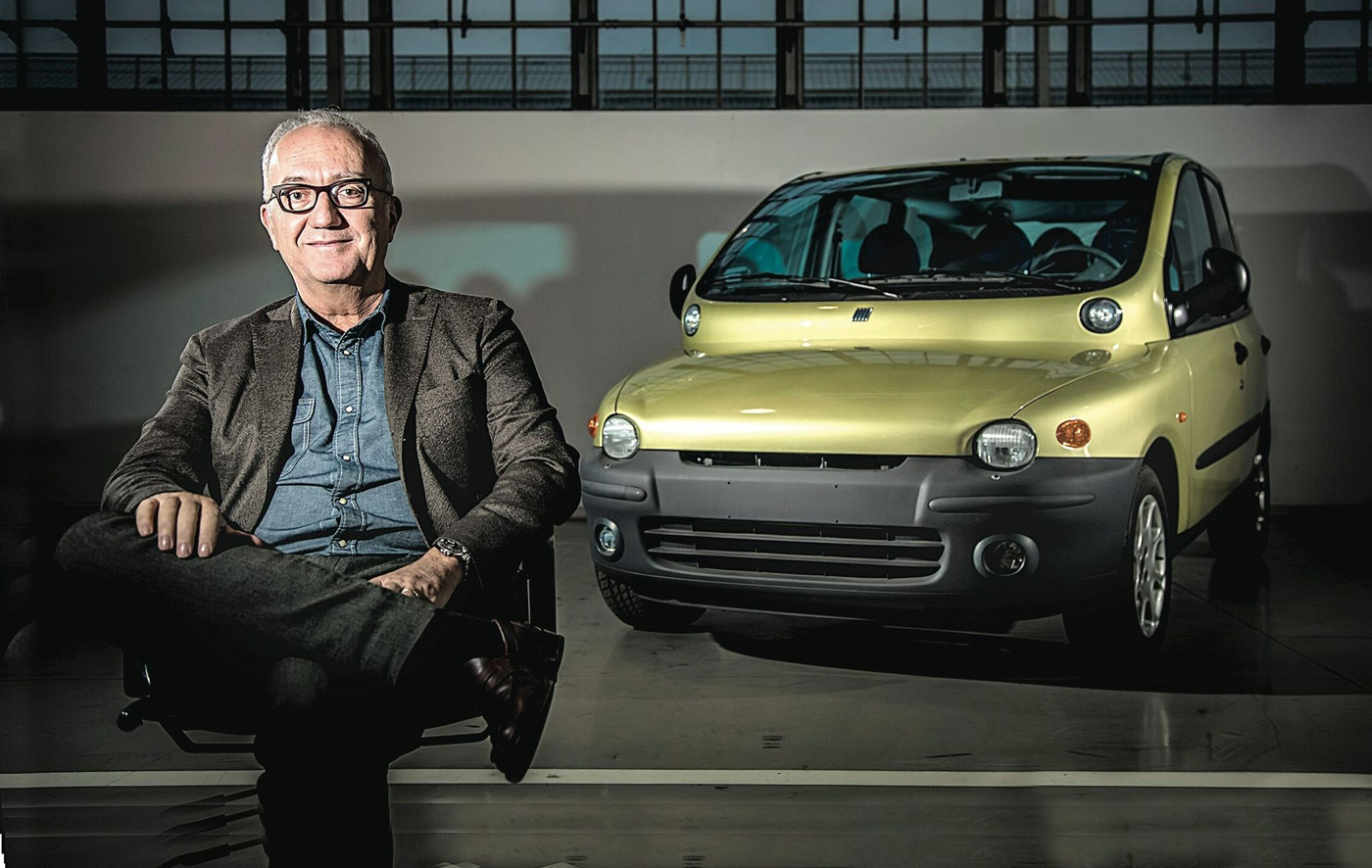
Fiat-Multipla (1998-2004) with designer Roberto Giolito. This remarkable car won awards for both Car of the Year from Top Gear, and “Ugliest Car Prize” from the BBC in 2000. A truly innovative Fiat that we’d love to have owned.
Many Fiats of the past have achieved ‘iconic status’ and we wondered, without having the privilege to own or drive any, what Fiat built from 1980 to 2000 might achieve that kind of honor. Our guess is the Panda 4×4, for its versatility and mini-Land Rover image, and the Multipla, a great car with a decidedly odd look. Alas, we must disqualify ourselves from voting.
And after all this, we are about to lose Fiat once again. The 500 never sold well here, the reliability was at the bottom of the CR charts, the bloated later 600s were not attractive, and aside from the Fiat Miata, there is nothing to appeal to the marketplace here, and no signs of a truly exceptional electric vehicle on the horizon.
Beare’s latest volume comes after two previous books, “Fiat, the first fifty years, 1899 to 1949”, published in 2019 (read review), then also in 2019 came “Fiat, thirty years of progress, 1950-1979” (read review).
Finally late this year Beare finished his look at the company from Turin with “Fiat, twenty more years, 1980-1999” thus completing his 100 year history.
And will Beare take on the last 20 years to complete the entire history of Fiat? He says he’s 74, and it would take 3-4 years to do all the research and writing necessary to create a fourth volume. Then it would be just in time for yet another take on the amazing company from Turin. Odds then are slim.
Well, have you anything else to do?
Book and ordering information:
Publisher: Stinkwheel Publishing, 2021
Treddol, Chirbury Road, Montgomery SY 15 6QW
Order from www.stinkwheel.co.uk
Fiat: Twenty More Years, VIII 1980-1999 by David Beare
ISBN 978-0-9547363-9-2
Soft cover, 125 pages
£28 plus £8.50 airmail to U.S.
Read our reviews of Beare’s other books:

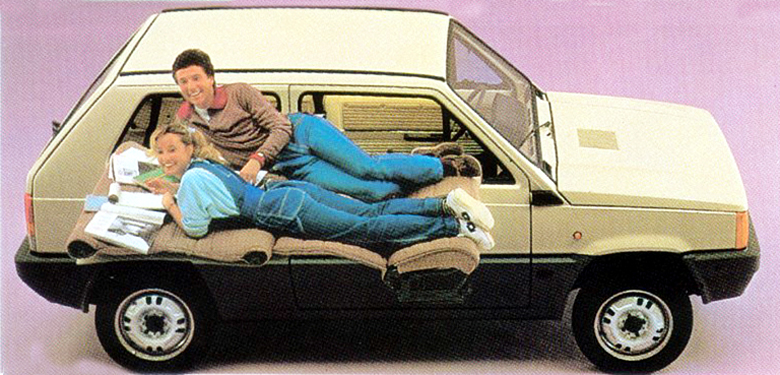
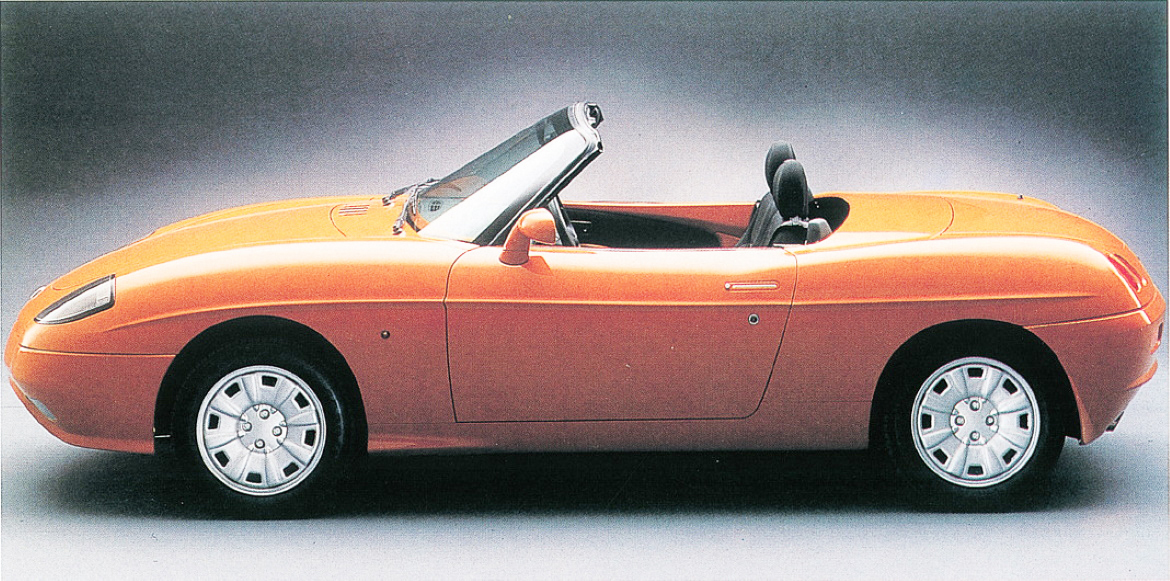
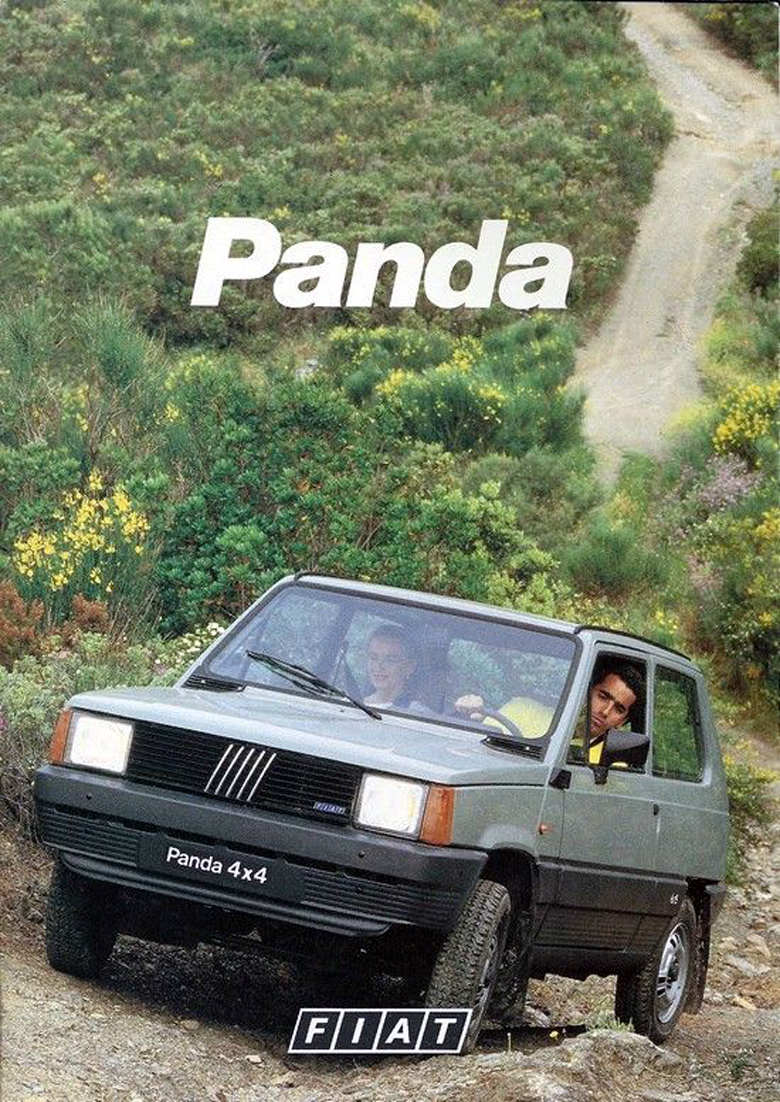
Just sayin´……..since about 1992 we have used Fiats (and the occasional Alfa) as daily drivers in my family, covering at least 50000 miles a year in Europe (mixed capital city, rural lanes and long distance highway driving in different climates). The main motivation was not to spend a lot of money on transportation (still less on badge snobbery and depreciation) and enjoy the drive. The money saved has been spent on classics we otherwise could not afford!
These cars have always been driven hard but maintained by the book, and other than a cambelt tensioner failure on a Fiat Brava at 120000 miles, I don´t think we have had to Fix It Again, Tony any more than another budget brand, given the 1,250,000 miles that 25 years of family motoring would seem to represent. No replacement engines, transmissions, etc just service items and wear & tear. No real rust problems either in galvanised post 90s Italian cars.
Standouts have been Cinquecento Sporting, Tipo, Bravo/a, Barchetta, Panda 100hp. I haven´t had a Fiat Coupé, but that should also go on the list. If surfers ever take to the Multipla, it would quickly become the cult car it deserves to be!
I lived in Europe during that time and these cars were everywhere. If in the US, sadly people ridiculed FIATs, they were more appreciated in Europe but still with a cheap to affordable stigma. However, there were exceptions.
In the south of France, I saw a few Panda 4×4. They were great mountain cars. A friend of mine had one. Nothing beat the Panda’s interior roominess. A collector friend of ours told me Giugiaro had told him that the Panda was his greatest achievement with that useable interior. If the Mini was a hellish blast to drive, the Panda was a liveable daily driver.
I remember seeing the Bachetta for the first time and it was also the first time I felt a FIAT looked better than an Alfa Romeo GTV of the 90s. I still see one or two driven around Nice, France.
The Multipla was an odd-looking and strange beast. With its unexpected lines that constantly made you wonder where they would ever end, it felt so Italian in so many ways.
The one I lusted for was the rare and illusive Lancia Thema 8.32. Understated, subdued, and police-friendly Ferrari-powered sedan. It sparked my love of performance sedans in the late 80s and early 90s. Unless I’m getting my dates mixed up, Lancia was already part of FIAT, I hope
“another Giugiaro masterpiece, the Croma, introduced in 1985, sharing the platform with the Alfa 164 and Saab 9000” … AND the Lancia Thema. I owned one in the late ’80s and it was the best car I ever owned, powerful, luxurious, spacious, handled well, no rust, nothing fell off!
And yes Lancia had been owned by Fiat for some years by then. The Beta I had before the Thema was the first product of the Fiat-Lancia combine…great cars